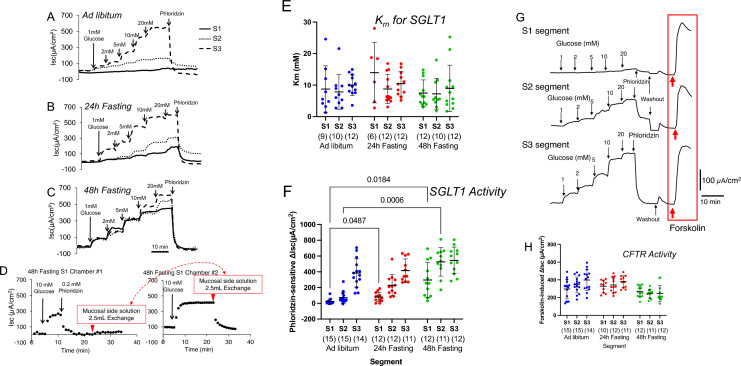Figure 3.
Effect of fasting on glucose-induced short-circuit current (ΔIsc) along the intestinal axis. A representative trace in each segment under ad libitum and fasting conditions is shown. Ad libitum fed mice (A), 24-h fasted mice (B) and 48-h fasted mice (C). The final concentration of glucose is shown in mM. 100 µM phloridzin was added to mucosal side. The effect of fasting on phloridzin degradation is shown (D). To examine whether phloridzin degrades in the chamber, 0.2 mM phloridzin was added to one chamber after the addition of glucose and allowed to incubate for 10 min. As indicated by the red arrowhead, half the volume (2.5 mL) of the mucosal solution from the first chamber (containing the phloridzin) was added to the other chamber to which no phloridzin had been added. A representative trace from three experiments is shown. The summary of the Michaelis–Menten constant (Km) for SGLT1 (E). The summary of phloridzin-sensitive ΔIsc (F). P values are shown with numbers, Two-way ANOVA. Representative traces of CFTR activity measurements are shown (G). After measuring SGLT1 activity, the mucosal and serosal sides of the Ussing chamber were washed with fresh Ringer's solution. After stabilizing the baseline short-circuit current, 10 µM forskolin, an inhibitor of adenylate cyclase, was added to serosal side of the chambers. The summary of forskolin-induced ΔIsc (H). Data are presented as mean ± SD. Numbers in parentheses indicate the number of animals.

